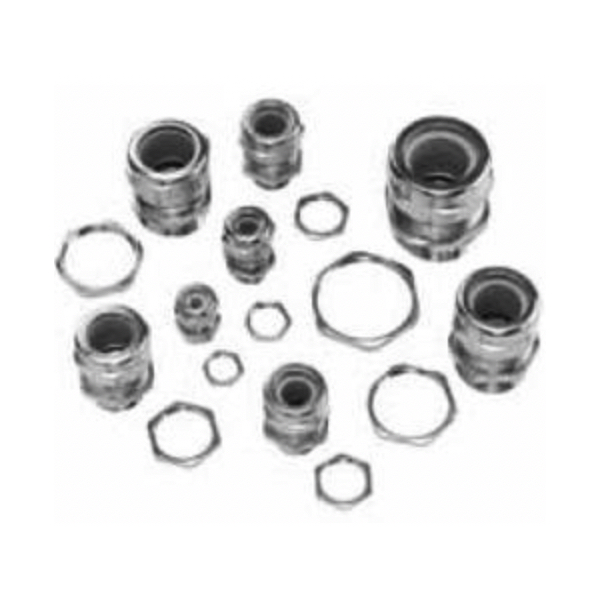Cable Strain Relief

RSP Supply carries a full line of cable strain relief connectors, clamps, and grips designed to protect electrical cables and maintain reliable system performance. These components safeguard wiring from damage caused by excessive tension, bending, or accidental pulling; common causes of signal interference, connection failure, or system downtime. By maintaining a secure connection point, strain relief components extend cable life, improve reliability, and enhance overall safety.
Cable strain relief devices come in many materials, including plastic, rubber, and metal. Each type offers different benefits depending on the environment and application. Plastic or nylon versions provide cost-effective, lightweight protection, while nickel-plated brass and stainless steel models deliver superior strength and corrosion resistance for industrial and outdoor environments. Many models maintain a NEMA 4 or IP-rated seal, ensuring protection against dust, moisture, and other environmental hazards. Cord grips and cable glands are among the most common forms of strain relief. These versatile components can accommodate a wide range of cable diameters and are easy to install - simply clamp or fasten the device around the cable at the entry point of the enclosure or connector housing. Once installed, they absorb pulling forces, reduce mechanical stress, and prevent the cable from loosening or disconnecting under strain.
FAQs
Q: What is the purpose of a cable strain relief connector?
A cable strain relief connector protects cables from mechanical stress by preventing bending, pulling, or twisting at the connection point, helping extend cable life and maintain electrical integrity.
Q: What materials are used for strain relief devices?
Strain relief devices are typically made from plastic, rubber, stainless steel, or nickel-plated brass. Each material is chosen based on durability, environmental exposure, and the level of protection required.
Q: What is a NEMA 4 rating, and why is it important for cable strain relief?
A NEMA 4 rating ensures the device can resist dust, dirt, and water ingress, making it ideal for both indoor and outdoor environments where reliable sealing and environmental protection are required.
Q: Is a nickel-plated brass cable gland a good option for control cabinets?
Yes, a nickel-plated brass cable gland is an excellent choice for control cabinets due to its strength, corrosion resistance, and ability to maintain a secure, watertight seal.
Q: How is strain relief installed?
Strain relief is typically installed by clamping or fastening the device securely around the cable at its entry point into the housing or connector, distributing tension and preventing damage to the cable conductors.
Why Buy Cable Strain Relief Connectors from RSP Supply
RSP Supply offers a comprehensive selection of cable strain relief connectors, clamps, and grips from trusted manufacturers. Our selection of products provide reliable protection against mechanical and environmental stress while maintaining compliance with NEMA and IP standards. With same-day shipping and expert support, RSP Supply helps ensure your electrical systems remain safe, durable, and high-performing.

